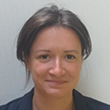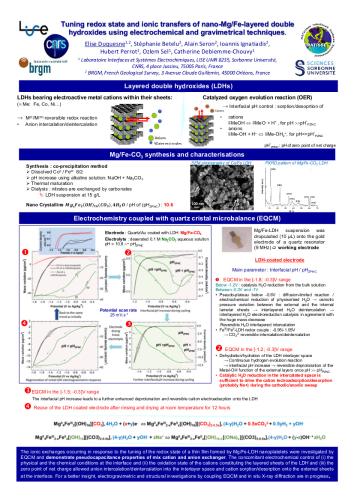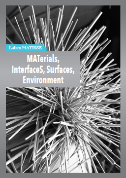Investigation of the electrochemical properties of Layered Double Hydroxides : in operando advanced analysis of ionic transfer mechanisms”

Axe 3 - Interfaces, transport et réactivité
Thèse d’Élise Duquesne
Thèse commencée le 1er octobre 2016. Cette thèse est financée par l'Appel à projet Industriel 2015 de MATISSE et co-financée avec le Bureau de recherches Géologiques et Minières (BRGM)
Soutenance de thèse le 30 septembre 2019 à 14h - Salle 101 de l'UFR de Chimie
Porteurs académiques
- Laboratoire Interfaces et Systèmes Electrochimiques (LISE)
Porteuse de projet : Catherine DEBIEMME-CHOUVY
Porteurs industriels
- Bureau de recherches Géologiques et Minières (BRGM)
Co-encadrants : Stéphanie BETELU, Alain SERON
Présentation du projet
AbstractThe interest of the layered double hydroxide (LDH) material principally lies in its bidimensional structure conferring a high capacity for cation and anion adsorption as well as anionic exchange and porosity. Their general formula is [MII1-yNIIIy(OH)2y+][Am-y/m]y-, zH2O. It offers the possibility to access a high diversity of species either by the modification of the chemical composition of the layers, or by the chemical or structural modification of the interlayered space.
It is highly significant to meticulously study, understand and control the electrochemical mechanism related to the ionic transfer between the material and the electrolyte which constitutes an important part of the operating principle of these applications. Particularly, a reversible ion transfer is actually controlled in LDH composed of redox-active transition metals (ex: Co3+/Co2+, Ni3+/Ni2+, Fe3+/Fe2+ etc…) by tuning the oxidation state of the metallic sites to reversibly modify the positive charge excess within the layers that enhance an electron hopping mechanism. The low electronic conductivity performance of the LDHs is promoted by preparing thin films of LDH coated on a working electrode surface.
This Ph.D. thesis aims to deepen the understanding of the mechanisms and kinetics related to the ion/solvent transfer between the electrolyte and the Ni/Fe-LDH 6/2 by in operando coupled techniques under polarization. A non-conventional coupled electrochemical and gravimetric method, specifically the electrochemical impedance spectroscopy (EIS) coupled to a fast quartz crystal microbalance (QCM) also called ac-electrogravimetry, enables to study the ion transfer phenomena located at the electrode/electrolyte interface (nature of all the transferred species as well as transferred concentration). Many information can be obtained: (i) kinetics and identification of species transferred between the electrode and the electrolyte, (ii) separation of the different contributions related to the charged and non-charged species involved in the electrochemical processes, and (iii) variation of the relative concentrations of the species inside the examined material.
It led to demonstrate the nano-Ni/Fe-LDH pseudocapacitance properties of mix cation (K+) and anion (OH-) exchanger and the water molecule transfer during the reversible redox reaction. The coupling of EQCM and ac-electrogravimetry technique led to demonstrate the existence of an irreversible oxidation reaction that was attributed to the O2 evolution reaction within the interlayer space. Concomitantly, the electrochemical control of the pH at the coated interface, via catalyzed oxygen evolution reaction, allowed cation electroadsorption/desorption onto the external surfaces in agreement with the pH of zero point of net charge of the nano-Ni/Fe-LDHs. This phenomenon was further evidenced by EDX and XPS analyses and in situ XRD under polarization. For the first time, coupling in operando XRD to mass and current measurements under cycling potential at synchrotron (Saclay, France) enabled to underline non reversible OER catalysis reactions that play a role in the interlayer spacing and in the species transfer at the interface of the LDH by interfacial pH control.
This work paves the way towards the development of green electrolysis processes for the capture and release of ions (energy storage, water treatment, industrial effluent treatment…).
Communications orales
- Septembre 2018
The 69th annual meeting of the International Society of Electrochemistry (ISE). - Juillet 2019
The international conference on clay science and technology, Paris, France.
Posters
- Mars 2017
La 6ème Journée Des Doctorants du BRGM, Orléans, France - Mai 2017
La Journée de l’Ecole Doctorale 388, Paris, France - Novembre 2017
La journée scientifique de la Division Chimie-Physique, Paris, France. - Avril 2018
La 7ème Journée Des Doctorants du BRGM, Orléans, France. - Mai 2018
The 8th international conference on Electrochemistry and Nanosciences, Nancy, France. - Juillet 2019
The international conference on clay science and technology, Paris, France
Egalement dans la rubrique
- Thèse de Jonathan Baptista
- Thèse de Florian Beaugnon
- Thèse d'Emmanuelle de Clermont Gallerande
- Thèse de Cyrine Ernandes
- Thèse d'Ali Fakih
- Thèse d'Amaury Fau
- Thèse de Camille Lagoin
- Thèse de Miléna Lama
- Thèse de Danilo Longo
- Thèse de Lorela Masci
- Thèse de Bertille Martinez
- Thèse d'Elise Médina
- Thèse d'Elisa Meriggio
- Thèse d'Estelle Palierse
- Thèse de Karol Rakotozandriny
- Thèse de Sofiane Schaack
- Thèse de Lionel Tinat
- Thèse de Hancheng Yang
- Thèse de Dan Zhao
MATISSE en chiffres
- 4 disciplines : Chimie, Physique, Sciences de la Terre, Patrimoine
- 400 permanents
Contact
Direction
Florence Babonneau
Administration
Communication
Emmanuel Sautjeau




